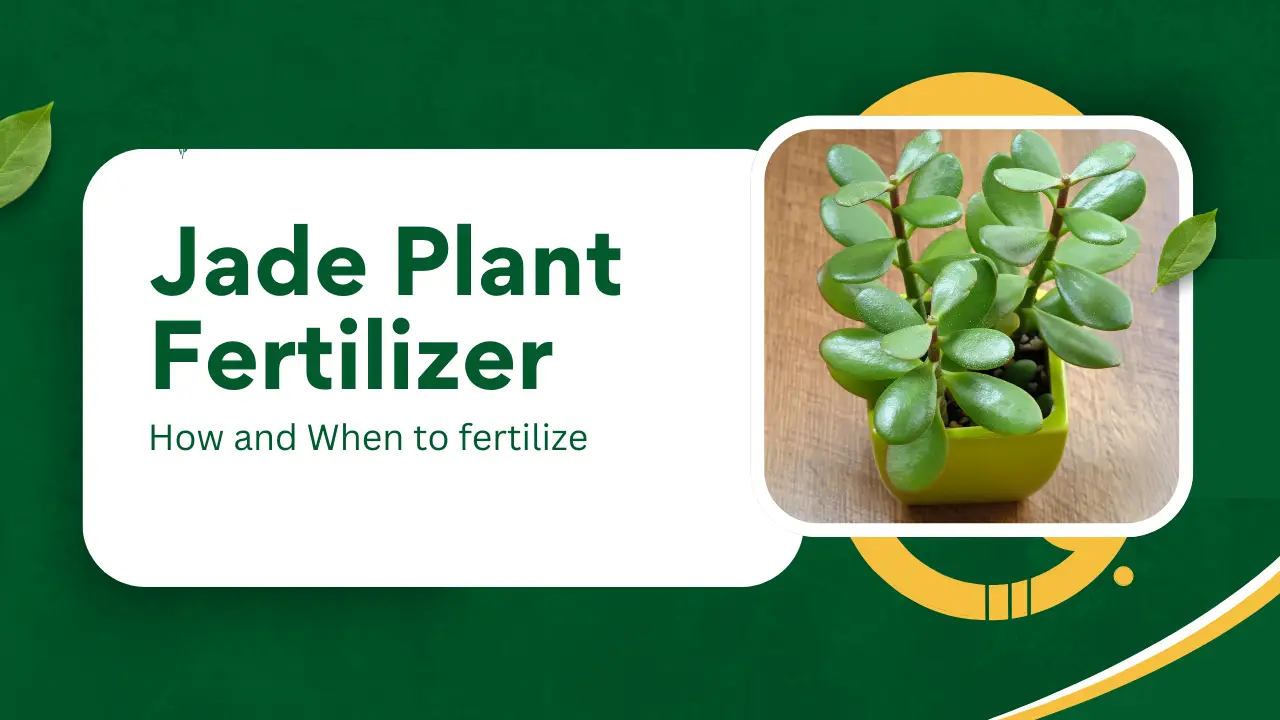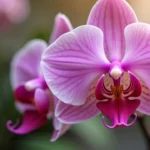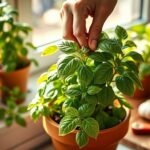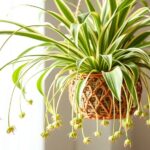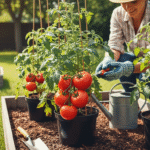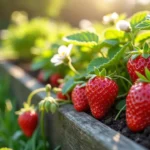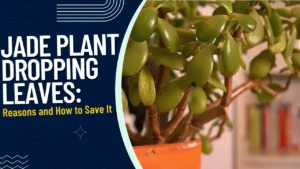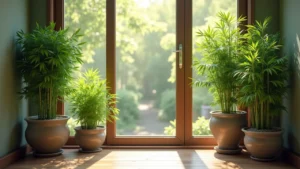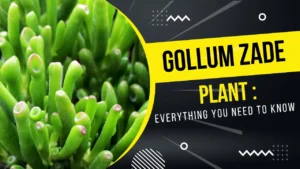Anyone who has ever shown interest in gardening knows that jade plants are amazing indoor plants. They are resilient and known to withstand a lot of tough conditions, without a lot of help.
But there still are some things that might affect your plants. To take care of your plant, you must fertilize them properly, with suitable material, and at the right time.
Fertilizer acts as food for your plant and your plant must have proper exposure to the same. This article will guide you through everything there is to know in a situation of this sort.
Table of Contents
What do we know about the Jade Plant?
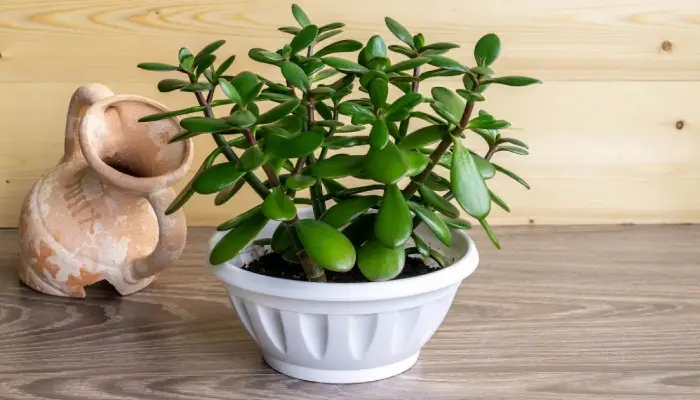
The jade plant is known to be a popular succulent houseplant with fleshy, oval-shaped leaves and thick, woody stems that resemble tiny tree trunks. With just a bit of care, it can grow to be between 3 and 6 feet tall, but it does so slowly, growing about 2 inches a year.
This small beauty, with its round leaves and smooth unique texture, is known to bring luck and symbolizes growth, prosperity, wealth, and positive energy.
Also if you are having a little tiff with your friends, the Jade Plant might help in the flourishing of your friendship.
General care of the Jade Plant
As was mentioned before, Jade Plants are a tough species to break, but that in no way implies that we can go ahead and insult them by not taking care of them in the best possible manner.
Here are some basic things that you need to be particular about when you take care of your succulents.
1. Fertilizer. For the best possible results, feed your jade plant a controlled-release fertilizer at the beginning of the season or weekly with a weak liquid solution.
Make sure that the fertilizer you use is a balanced mix in 20-20-20 at one-quarter strength on mature plants, and one with lower nitrogen concentration for younger plants.
2. Light. Your jade succulent is known for loving light, especially when they are young. When they are in the growth phase, you should expose them to bright, indirect sunlight to help them thrive.
Just remember to not leave them under direct sunlight or your plant might get harmed.
3. Potting and repotting. Jades don’t need to be repotted frequently. Typically, you can do this every 2 to 3 years for small plants, and for the bigger ones, every 4 to 5 years would do.
Repotting needs to be done on a priority basis only when you see that your plant has started outgrowing the pot that was its home.
4. Temperature. Your jade plants will prefer average household temperatures ranging from 65 to 70 degrees Fahrenheit.
At night and during the winter season, jade plants can handle lower temperatures, up to 55 degrees Fahrenheit but make sure that you don’t test your plant a lot.
5. Soil. In the case of a jade plant, a succulent-specific blend is your best bet. Ideally, the soil that houses your jade should have a neutral to slightly acidic pH level, and you should drain it well to prevent excessive moisture from accumulating and causing fungal growth in your plant.
Also, not a well-drained soil variety might accumulate extra water and lead to root rot.
Fertilizing your Jade Plant
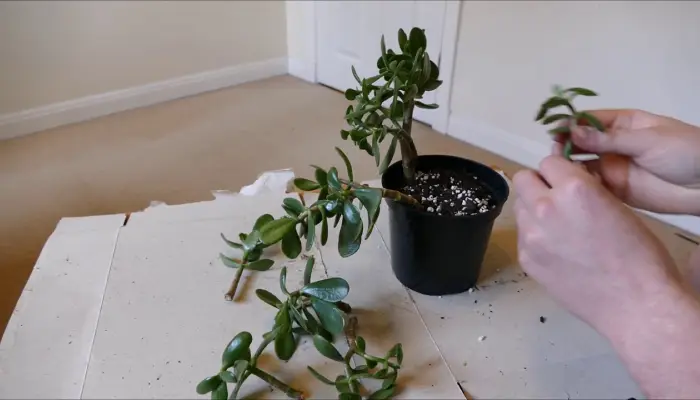
There are a lot of things that you need to be careful about and a lot of things entail the entire fertilizing process. Here are some things one needs to know about.
Signs Your Jade Plant Needs Feeding
Jade plants grow are native to South Africa. This habitat is known to have nutrient-poor, slightly acidic soil. As a result, most jade plant varieties tend to be slow growers. Even with the right amount of fertilizer, these succulents usually only grow two or three inches every year.
Here are the signs that you need to look for in your jade to know that they need fertilizing:
Drooping, stunted, or leggy growth
A jade plant that’s having trouble getting enough nutrients will without a doubt have stunted growth. The leaves will look like they are drooping or becoming small and stunted. The stems appear to be thin and leggy, making them too weak to support healthy foliage.
These symptoms can also point out that your jade plant isn’t receiving enough sunlight, the ambient temperature or humidity isn’t quite right, or your plant isn’t placed in an optimal position at your home.
Yellowing leaves
This is a very common symptom (often paired with wilting or dropping leaves) of many jade plant problems such as underwatering, overwatering, poor drainage, etc. But if you are up for some detective work and can get the feeling that the soil is fine, your plant may be lacking a few nutrients.
Vibrant green leaves indicate that your plant produces sufficient amounts of chlorophyll, which it needs for photosynthesis. Chlorophyll is generated from magnesium so yellow leaves could indicate a lack of magnesium in the soil for the roots to absorb. It’s worth pruning past the prime foliage on your jade plants as well.
Weak stems or roots
If the roots or stems of your jade plant feel like they are weak, there may not be enough nutrients in the soil. It is a lack of phosphorus that can create weakened roots.
Try to lift your jade plant very lightly from the pot. If the stems start to feel loose, the roots may not be strong enough to hold the plant in.
When and How Often Should You Fertilize Jade Plants?
As is common knowledge, jade plants are known to be slow growers, it is a corollary that they don’t need a lot of fertilizer.
Once the plant has started growing and starts producing new shoots in the spring, give it a heavily diluted dose of plant food. Repeat the same amount of dosage every six months throughout the growing season.
Don’t fertilize your jade plant when your place is approaching the winter season. During the colder months, most plants enter a state of semi-dormancy. Trying to force-feed your green friend during the winter will interfere with this natural rest period.
In addition to this, it’s best to hold off fertilizing newly propagated jade plants until they’ve had an opportunity to root in their new potting soil.
What Fertilizer should you use for your Jade Plant?
Because the plants are used to thriving in nutrient-poor environments, jade plants prefer not-so-strong, subtle, more balanced fertilizers. The best NPK ratio for a fertilizer for your jade plant is a 10-20-10 mix.
The higher phosphorus content is known to help your jade plant create a stronger root system. This is the perfect way for your jade to get as many nutrients for themselves as possible for them out of the poorer soils.
Because jade plants grow at a very slow pace, the higher nitrogen content isn’t going to make a lot of difference to the foliage of your plant. A decent amount of potassium helps protect your little succulent from pests and diseases.
Store-bought fertilizers can easily do the job for most houseplant owners. Avoid any fertilizers that might seem to have a higher nitrogen content than might seem necessary. Other than that, most all-purpose houseplant fertilizers can work well if they are diluted to one-quarter of their strength.
Another good option for your jade is to use fertilizers that are designed for cacti and succulents. These are somewhat tailored for succulents like jade plants that grow well in looser, nutritionally-deficient soils.
You can also make your fertilizer for your jade with ingredients that can be found easily in your local nursery. Fish emulsion is a great nitrogen source, while bonemeal contains a good amount of phosphorus. Potash or pulp from your banana peels is full of potassium.
For jade plants, a 1:2:1½ mix of fish emulsion, bonemeal, and potash is the best possible way to start. Combine this mix that you concocted with some Epsom salts for the magnesium requirements and dilute the mixture with a few gallons of warm water.
How to Apply Fertiliser to your Jade?
Using liquid-based fertilizers is the easiest and possibly the best way to provide your jade plant with the food it needs. These solutions ought to be diluted to about one-quarter of their original strength with water. If the fertilizer is too strong, it can burn and damage the plant.
When fertilizing jade plants, one key point to remember is to avoid pouring the fertilizer directly on a dry growing medium. The plant will do better if it gets the nutrients slowly rather than straight away.
Always water your jade plant as usual first, then go ahead to apply the diluted fertilizer.
Conclusion
Jade typically is a plant that offers you a lot to choose from. Be it your outdoor gardens or indoor decor, from large plants to small, there are a plethora of options for all of us. This doesn’t mean that the number of options decreases the amount of care your jade might require.
This decorative beauty requires fertilizing for the best possible growth rate. Take care of the plant and then your plant will take care of you!
In case you have any more questions regarding the care of your jade plant, please let us know in the comments section and we’ll love to help you out. Happy Planting!
FAQs
Q1. Should you fertilize your Jade Plant after repotting?
As a plant that appreciates only low nutrient levels, Jade Plants don’t enjoy fertilization right after repotting. Wait for at least 4 months after the change in the pot before adding any jade plant fertilizer and try not to feed the nutrients in the months leading up to repotting.
Q2. When should I fertilize my jade plant?
A good feeding schedule for your succulents is to give them fertilizer at six-month intervals during their main growth period. Avoid feeding your jade plant during the winter months of dormancy.
Q3. Are used coffee grounds good for jade plants?
Used coffee grounds generally are great for succulents like jade plants that grow in slightly acidic soils. Coffee grounds are also known for two crucial nutrients; magnesium and potassium. However, coffee grounds need to be heavily diluted and used sparingly with jade plants because the grounds have a very high nitrogen content.
Q4. What are the nutrients that your jade plant will need?
The Jade plant requires several micronutrients and macronutrients for its optimum growth and development.
Micronutrients include Iron, Zinc, Copper, Boron, Chloride, Manganese, and Molybdenum and the macronutrients are Carbon, Hydrogen, Oxygen, Sodium, Calcium, Sulfur, and Magnesium.

